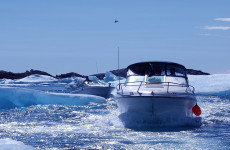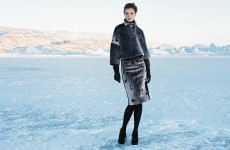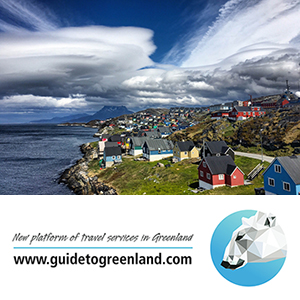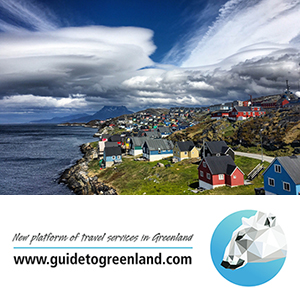
Culture and kaffemik in Copenhagen
Text: Finn Jørn Jakobsen, March 2011
Welcome!
»Tikilluarit! Would you like a cup of coffee? The proceeds go to help children and adolescents in Greenland«. Tikilluarit is the Greenlandic word for welcome and I feel welcome straight away. Not just on this visit, when I am at the Greenland House in Copenhagen on Greenland’s National Day on the 21st of June, and I have been welcomed by a couple of smiling women in national dress – I always feel welcome when my path takes me to the house in Løvstræde and this happens often.
The Greenlandic house at Løvstræde Street
Greenland House originally started when the many Greenlandic clubs and societies wanted their own premises. Copenhagen Council donated the first part of the start capital as a gift in connection with the town’s 800th anniversary in 1967. A number of foundations and private individuals added their support and on June 25th 1974, and Her Majesty Queen Margrethe, who is protector of the house, inaugurated Kalaallit Illuutaat.
Opening Greenland
Opening Greenland to the rest of the world and opening the rest of the world to Greenland are important tasks for Greenland House, situated in the heart of Denmark’s capital. The House is therefore worth a visit, if you want to keep up with the cultural trends in the country where progress moves faster and faster.
Roles
Laughter and a zest for life, paintings, music, hospitality and inclusiveness are some of the words I naturally associated with the place where Greenlanders gather.
Being the setting for celebrations, entertainment and social events is just one of Greenland House’s many roles. The employees are divided into different departments, each with its own primary functions.
Social involvement
The social commitment of many people is, in a way, also typical for the atmosphere in the house. Not least in the summer, where a great deal of the activities take place in the ground floor café, which leads out to a cosy court-yard. This evening, there is a closely packed crowd. They are waiting for the evening’s entertainment to begin – with, among others, Rasmus Lyberth. He can evoke strong feelings like no one else – from a longing for the spectacular Arctic nature to a love of life and the need we humans have for recognition and the company of others.
Events
National Day is just one example of the more important arrangements that are held each year in Greenland House – or Kalaallit Illuutaat, which is its Greenlandic name. In addition, the house is the venue for countless activities: art exhibitions, meetings, debates, lectures, club activities, and concerts.
More than…
The Culture and Information Department has a wide and thorough knowledge of Greenlandic and Arctic conditions. Its responsibilities range from providing general information about Greenland to conveying knowledge of Greenlandic culture in Denmark. This includes school services, exhibitions, lectures, film shows and concerts. In addition, advisory services are available for companies and other interested parties.
Counselling
Student counselling is another important function. Two guidance counsellors are employed for the 250 Greenlandic students that are associated with the house and they can come for advice and counselling in study-related, social, practical and personal matters.
Meet and dine
Due to the Nordic kitchen’s triumphant march into the gastronomic world, the superb Greenlandic ingredients are now in demand by gourmet cooks and Michelin restaurants all over the world. But Café Ajamut is one of the very few dining establishments in Denmark where Greenlandic food is served. It is mainly traditional meals such as cod, halibut, and salmon, various soups and roast lamb.
A different world
For many Greenlanders in Denmark the house is a personal and social haven that can give them the extra energy they need to handle everyday life on Danish terms. It is simply the place to meet in Copenhagen. But it is also the place where the town’s citizens come in order to experience a breath of Greenland and to gain insight into Greenlandic culture. It is the place where many students over time have acquired their first information about the country that has had a common history with Denmark for almost 300 years – and discovered that Greenland in 2010 is much more than ice and snow – or dog sleds and kayaks.
And global warming and climate changes have their own particular agenda with regard to Greenland.
Welcome
There are lots of good reasons to call in at Løvstræde in Copenhagen. One of them could be in connection with an arrangement at the house. Check what’s planned on Greenland House’s home page www.sumut.dk – or just drop in. You could be lucky enough to find an informal Greenlandic kaffemik.











